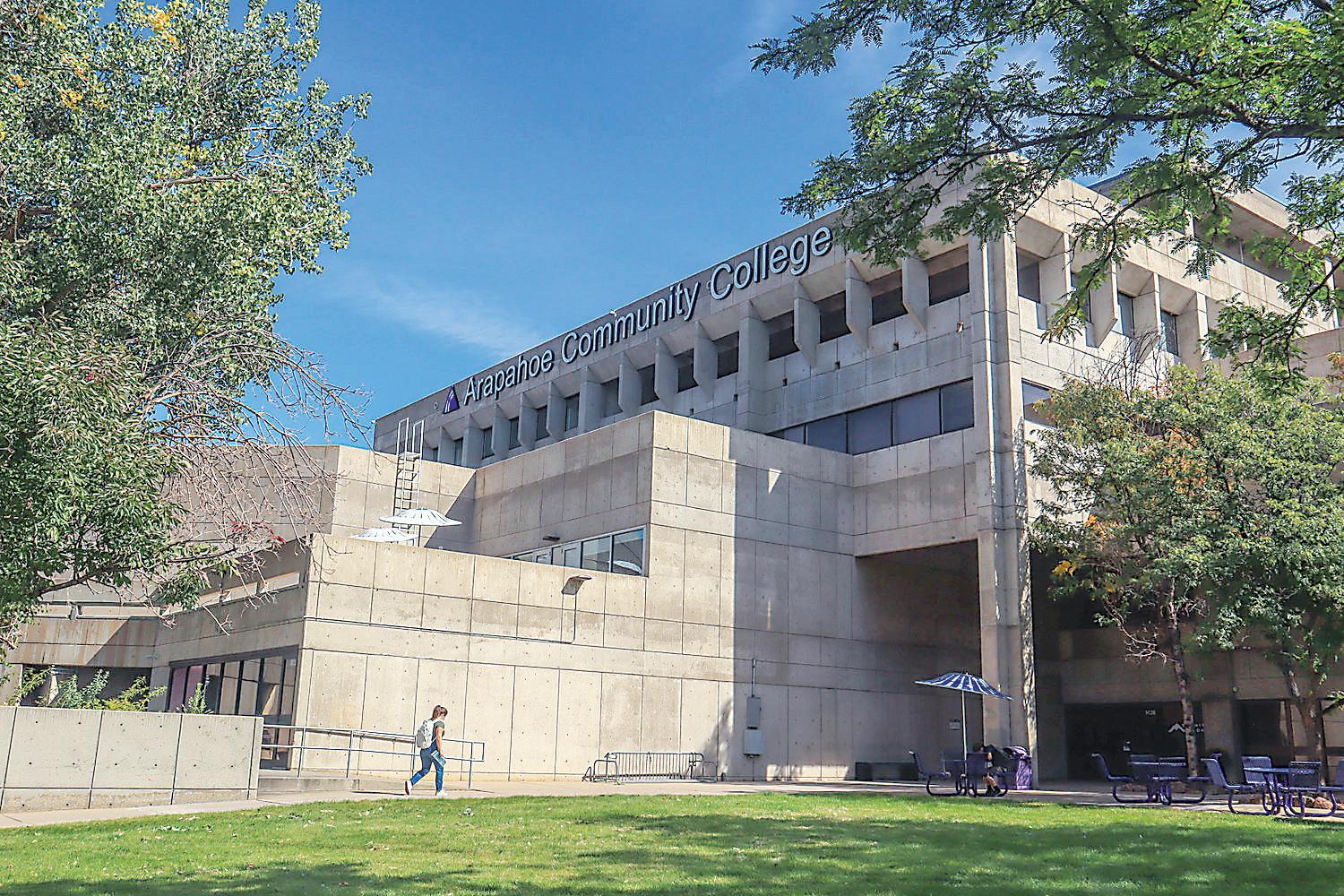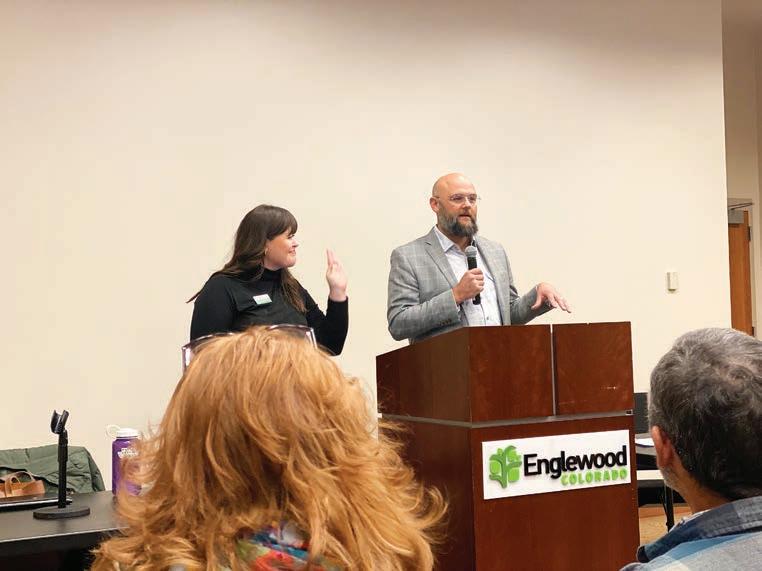
4 minute read
Some Colorado colleges enroll more first-generation students
Should they get funding?

BY JASON GONZALES CHALKBEAT COLORADO
Colorado colleges and universities would get a special designation if they enroll a high number of students who are the rst in their families to go to college, under a bill at the Capitol this year.
e largely symbolic measure has fed a bigger debate about how Colorado funds its public colleges. It also spurred a conversation about what rst-generation students need to be successful.

e rst generation-serving label that House Bill 1114 would create would attach to schools that enroll those students at a higher rate than the state average. It would also require Colorado’s higher education department to track how well students do at those schools.
e bill would not require schools to create additional programs to help those students get to and through college. Nor would it o er colleges more money to provide such support.
Money and support make a di erence for students, said Diane Schorr, director of advocacy and initiatives at the Center for First-generation Student Success. She questioned why the state wouldn’t ensure colleges with the new designation get either.
“What I would have liked to have seen is what’s being required of the institution?” Schorr said.

Supporters of the bill — including Metropolitan State University and Colorado Mesa University — would like to prod the state to better fund schools that serve a large share of rst-generation students. ese schools often have lower graduation rates, something that works against them in Colorado’s funding formula. It also costs a lot of money to run the programs that help rst-generation students.
Opponents of the bill, including Colorado State University, say that who enrolls the most rst-generation students shouldn’t matter. Instead, they say that state funding should follow those students wherever they enroll. With limited state funding for higher education, more money for certain institutions can mean less for others. is story was originally published by Chalkbeat. Sign up for their newsletters at ckbe. at/newsletters
Rezoning is one of several considerations ese units, also referred to as ADUs, are smaller living spaces that are an extension of an existing property, such as garage apartments or granny ats, according to the City and County of Denver’s website. e council is also looking to increase options for two-to-four-unit buildings in R-2 zones, which are residential one and multi-dwelling unit districts, according to the code of ordinances.
Rezoning R-1 zone districts is not the only consideration in the CodeNext draft that aims to address a ordable housing needs, Anderson explained.

Another consideration is to increase the allowances of accessory dwelling units, permitting them in all residential zones and, on some lots, allowing two accessory dwelling units, he said.
“So this would be expanding the allowance especially in terms of multi-family units in courtyard patterns, where you could take two lots together and allow several units to face into a common courtyard,” he said.
Implementing development bonuses is also under consideration, which is when a developer gets some type of advantage for o ering a ordable housing in its development.
For example, if a developer agrees to make a certain number of units in a project more a ordable, then they could potentially reduce their parking requirement or increase their building height, Anderson said.
“So that’s the same setback, bulk plane, open space requirement — all those requirements would be the same. So what we’re not proposing is that a developer can come in and put up a 60-foot-tall fourunit building on the corner of a lot or something like that,” he said. “We want small-scale multiplexes.”
“ is is not set in stone, but I think the idea that we generally agreed on is that if there’s two, three or four units, one of those units has to be a ordable at that 80% AMI (area median income) level,” he said. “ is would not be a rst step for a homeless person to get into homeownership, this will be … for those who are working in the community — workforce housing.”

Nunnenkamp said there are currently four members of the sevenperson council who are supportive of considering what these changes may look like, including herself and Anderson.
Why
is R-1 zoning under consideration?
One of the primary aims of the R-1 rezoning is to increase the overall housing supply, Anderson said.
“When you don’t have enough of something, then the price goes up because people are competing for that product. Housing is in that situation, really, across the country, but certainly in Englewood and the Denver metro area, we have a housing shortage,” he said.
Anderson explained the council still does not know many details regarding the potential allowance of two-to-four-unit buildings on certain lots in R-1-A, R-1-B and R1-C zone districts.
“We don’t want every R-1-A lot to be open to this development,” he said. “What we’re looking at, and still trying to decide on, and will discuss at future meetings is: What is an appropriate lot size for the different zone districts?”
“We want it to be spread out around the city, right?” Anderson added. “We don’t want whole blocks getting all the houses knocked down and new houses put in — it’s too much change too fast. So the idea with a proposal like this is it would allow for increased development but it would be more spread out.”
He noted that these two-to-fourunit buildings would be required to meet the same requirements as a single-family home.
“We haven’t made any decisions. We are very much in the drafting, considering, research, tweaking, trying to thread the needle portion of this process. We’re trying really hard to get it right,” she said.
During the public question portion of the town hall, someone inquired who the four council members are.

“If you go back and listen to the meeting on January 23 … you can gure out who those people are. It’s not that hard,” he said, adding that he won’t speak for them because he doesn’t know how they’ll ultimately vote on the issue. “But yes, we did reach consensus on some of these issues. And we’ll see where it goes when the nal proposals come in.”
One of the members who appears to be supportive of the consideration is Mayor Othoniel Sierra, who wrote about it in the spring edition of the city’s magazine.
“While Englewood can’t control all of the variables that go into housing costs, one factor we can control is to make it much easier to build a ordable housing in our city, through changes to our development code,” Sierra wrote.
During the Jan. 23 meeting, Sierra said he wants to see the council do something about a ordable housing within the city.
“We have to increase our a ordable housing in the area. We gotta increase the supply within the area, as well. For those that are saying






